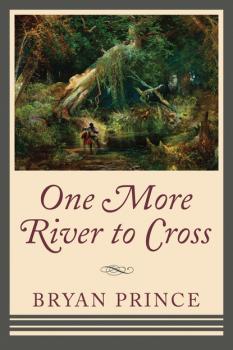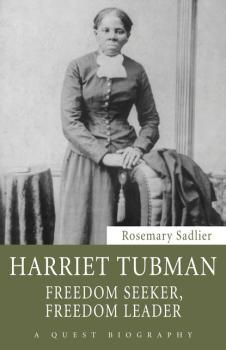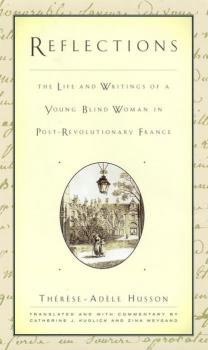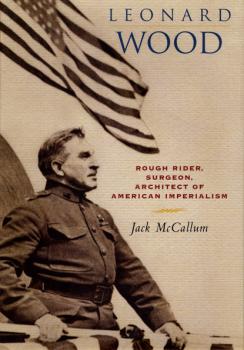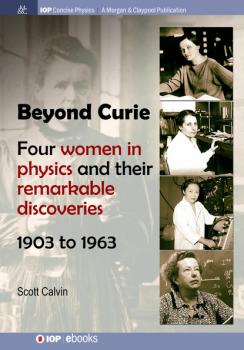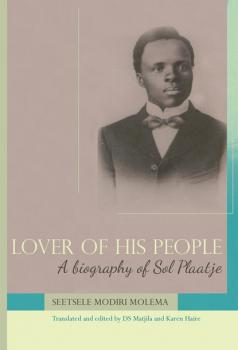ТОП просматриваемых книг сайта:
Биографии и Мемуары
Различные книги в жанре Биографии и Мемуары, доступные для чтения и скачиванияАннотация
In the early to mid-19th century, Isaac Brown, a slave, was accused of the attempted murder of a prominent plantation owner, despite there being no evidence of his guilt. Brown, after enduring two brutal floggings, was shipped to a New Orleans slave pen. From there the resourceful Brown was able to make a daring escape to Philadelphia in the free state of Pennsylvania. His biggest error was writing a note informing his free wife and 11 children in Maryland of his whereabouts. The note was intercepted and led to his arrest and extradition back to Maryland. While engaged in researching an ancestor named Isaac Brown, Bryan Prince encountered the very high-profile case of what turned out to be a different Isaac Brown. The story of this slave, with its culmination in Brown's dramatic escape and ultimate success in crossing the border into Canada, is the riveting subject of historian Bryan Prince's latest book.
Аннотация
2013 Information Book Awards – Long-listed Harriet Tubman encouraged enslaved Africans to make the break for freedom and reinforced the potential of black freedom and independence. Born in the United States and enslaved as a child, Harriet Tubman (circa 1820-1913) is one of the best-known figures connected to the Underground Railroad. Through her knowledge and outdoor survival skills, honed through her unpaid labour in the fields and through the later connections she made in the abolitionist community, Tubman was well poised to command her followers. By her discipline and example, she never lost a «passenger.» Tubman’s exploits helped to empower those opposed to slavery and enrage those who supported it. Her success encouraged enslaved Africans to make the brave break for freedom and reinforced the belief held by abolitionists in the potential of black freedom and independence. Referred to as «General Tubman» due to her contributions to the Underground Railroad and to the Union Army, Tubman’s numerous rescue missions ending in Canada helped to build the interest in escape and reinforce the position of Canada as the final stop on the journey to freedom.
Информация о книге
Автор произведения Rosemary Sadlier
Жанр Биографии и Мемуары
Серия Quest Biography
Аннотация
During the American Revolution and the border conflicts that followed, Simon Girty’s name struck terror into the hearts of U.S. settlers in the Ohio Valley and the territory of Kentucky. Girty (1741-1818) had lived with the Natives most of his life. Scorned by his fellow white frontiersmen as an «Indian lover,» Girty became an Indian agent for the British. He accompanied Native raids against Americans, spied deep into enemy territory, and was influential in convincing the tribes to fight for the British. The Americans declared Girty an outlaw. In U.S. history books he is a villain even worse than Benedict Arnold. Yet in Canada, Girty is regarded as a Loyalist hero, and a historic plaque marks the site of his homestead on the Ontario side of the Detroit River. In Native history, Girty stands out as one of the few white men who championed their cause against American expansion. But was he truly the «White Savage» of legend, or a hero whose story was twisted by his foes?
Аннотация
In the 1820s, several years before Braille was invented, Therese-Adele Husson, a young blind woman from provincial France, wrote an audacious manifesto about her life, French society, and her hopes for the future. Through extensive research and scholarly detective work, authors Catherine Kudlick and Zina Weygand have rescued this intriguing woman and the remarkable story of her life and tragic death from obscurity, giving readers a rare look into a world recorded by an unlikely historical figure. Reflections is one of the earliest recorded manifestations of group solidarity among people with the same disability, advocating self-sufficiency and independence on the part of blind people, encouraging education for all blind children, and exploring gender roles for both men and women. Resolutely defying the sense of «otherness» which pervades discourse about the disabled, Husson instead convinces us that that blindness offers a fresh and important perspective on both history and ourselves. In rescuing this important historical account and recreating the life of an obscure but potent figure, Weygand and Kudlick have awakened a perspective that transcends time and which, ultimately, remaps our inherent ideas of physical sensibility
Аннотация
One of the most fascinating but least remembered figures in modern American history, Major General Leonard Wood (1860-1927) was, with his close friend Theodore Roosevelt, an icon of U.S. imperialism as the nation evolved into a global power at the dawn of the twentieth century. The myriad of roles that Wood played in his extraordinary career offer a mirror image of the country's expansion from the urban Northeast to the western frontier to Latin America and the Far East. Boston surgeon, Indian fighter, U.S. Army Chief of Staff, Medal of Honor winner, commander of the Rough Riders in the Spanish-American War, Governor General of the Philippines, and presidential candidate, Wood was one of a select cadre of men that transformed the American military at the turn of the century, turning it into a modern fighting force and the nation into a world power.Throughout his life, Wood tested the division between military and civilian power to its very limits. His 1920 presidential campaign and his conflicts with civilian politicians were harbingers of the struggles that Generals Douglas MacArthur and Dwight D. Eisenhower would face as they moved from the battlefield to Washington following World War II.Jack McCallum has mined Wood's extensive personal records—including diaries, correspondence, and photographs—to create a vivid portrait of a complex man and the legacy he left on U.S. imperialism. America's rapid conquest of Cuba and the Philippines and the subsequent political and economic reconstruction it imposed under Wood's military supervision in these regions have important parallels to current U.S. involvement in the Middle East, both in its successes and its failures.
Аннотация
In the 116 year history of the Nobel Prize in Physics, only two women have won the award; Marie Curie (1903) and Maria Mayer (1963). During the 60 years between those awards, several women did work of similar calibre. This book focuses on those women, providing biographies for each that discuss both how they made their discoveries and the gender-specific reception of those discoveries. It also discusses the Nobel process and how society and the scientific community's treatment of them were influenced by their gender.
Информация о книге
Автор произведения Scott Calvin
Жанр Биографии и Мемуары
Серия IOP Concise Physics
Аннотация
<P>Things Come On is a broken and sutured hybrid of forms, combining poetry, prose narration, primary documents, dramatic dialogue, and pictures. The narrative is woven around the almost exact concurrence of the Watergate scandal and the dates of the poet's mother's illness and death from breast cancer, and weaves together private and public tragedies—showing how the language of illness and of political cover-up powerfully resonate with one another. The resulting «amneoir» (a blend of «memoir» and «amnesia») explores a time for which the author must rely largely on testimony and documentary evidence—not unlike the Congress and the nation did during the same period. Absences, amnesia, and silences count for at least as much as words. As the double tragedy unfolds, it refuses to become part of an overarching system, metaphor, or metanarrative, but rather raises questions of memory and evidence, gender and genre, personal and political, and expert vs. lay language. This haunting experimental biography challenges our assumptions about the distance between individual experience and history. A reader's companion is available at http://thingscomeonreader.site.wesleyan.edu/</P><P><B>Hardcover is un-jacketed.</B></P>
Информация о книге
Автор произведения Joseph Harrington
Жанр Биографии и Мемуары
Серия Wesleyan Poetry Series
Аннотация
<P>A groundbreaking filmmaker dogged by controversy in both his personal life and career, Elia Kazan was one of the most important directors of postwar American cinema. In landmark motion pictures such as A Streetcar Named Desire, On the Waterfront, East of Eden, and Splendor in the Grass, Kazan crafted an emotionally raw form of psychological realism. His reputation has rested on his Academy award-winning work with actors, his provocative portrayal of sexual, moral, and generational conflict, and his unpopular decision to name former colleagues as Communists before the House Un-American Activities Committee in 1952. But much of Kazan's influential cinematic legacy remains unexamined. Arriving in the wake of his centenary, Kazan Revisited engages and moves beyond existing debates regarding Kazan's contributions to film, tackling the social, political, industrial, and aesthetic significance of his work from a range of critical perspectives. Featuring essays by established film critics and scholars such as Richard Schickel (Time), Victor Navasky (The Nation), Mark Harris (Entertainment Weekly), Kent Jones (Film Comment), Jonathan Rosenbaum (Essential Cinema, 2004), Jeanine Basinger (The Star Machine, 2007), and Leo Braudy (On the Waterfront, 2008), this book is a must for diehard cinephiles and those new to Kazan alike.</P><P>Contributors include: JEANINE BASINGER, LEO BRAUDY, LISA DOMBROWSKI, HADEN GUEST, MARK HARRIS, KENT JONES, PATRICK KEATING, SAVANNAH LEE, BRENDA MURPHY, VICTOR NAVASKY, BRIAN NEVE, JONATHAN ROSENBAUM, RICHARD SCHICKEL, ANDREW TRACY, and SAM WASSON.</P>

